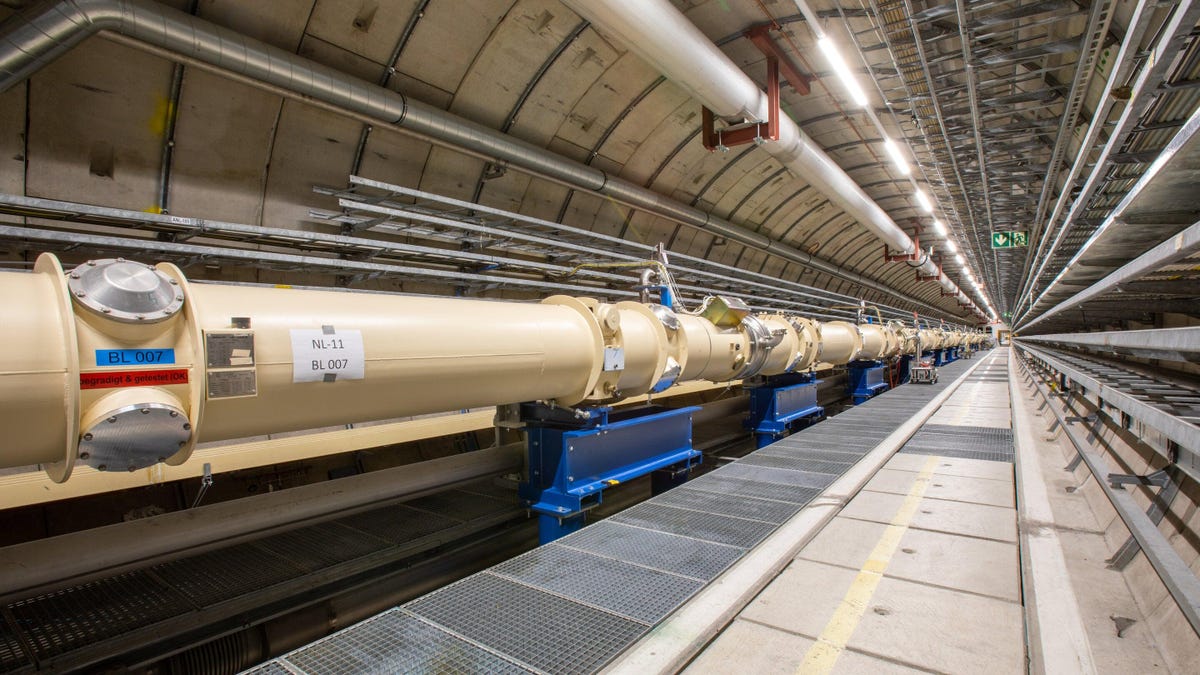
ALPS II is separated into two parts by a wall that light cannot pass through, but an axion could. If light shows up on the far side of the experiment, it would indicate to scientists that a photon turned into an axion, transitted the wall, and reverted to a photon.
Advertisement
“Despite all our technical tricks, the probability of a photon turning into an axion and back again is very small,” said Axel Lindner, project leader at DESY and spokesperson of the ALPS collaboration, in a DESY release. The odds, Lindner added, are “like throwing 33 dice and them all coming up the same.”
The experiment will begin its search in an “attenuated operating mode,” according to the release, to make it easier to discern background light that could give false positives for axionic dark matter. ALPS II is expected to reach full sensitivity later this year and will have its mirror system upgraded next year. The first data from the experiment is expected in 2024.
Advertisement
“Even if we don’t find any light particles with ALPS, the experiment will shift the exclusion limits for ultra-light particles by a factor of 1000,” Lindner said. That’ll be a big step, as the axion search thus far has been a laborious process of homing in on the likely mass range for the theorized particles.
ALPS II will join forces with other behemoth dark matter detectors like LUX-ZEPLIN in South Dakota and XENON1T under the Apennine Mountains in sniffing out the elusive physics that undergird the universe.
Advertisement
More: This Dark Matter Radio Could Tune Into New Physics
Services Marketplace – Listings, Bookings & Reviews